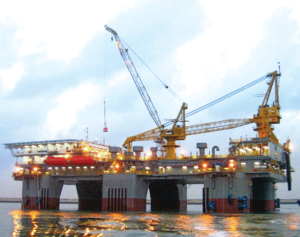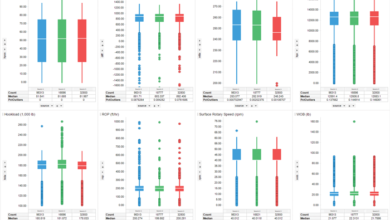Plug and abandonment system was designed to deal with wellbore uncertainties while remaining light enough to be rigged up on aging platforms
By Jean-Christophe Le Guen, Sapura Energy

Sapura Energy recently developed a lightweight drilling package for a long-term plug and abandonment (P&A) campaign in the Asia Pacific region. The drilling package, to be deployed in conjunction with the SKD Alliance semi-tender rig in early 2018, was developed directly in response to an operator’s request for a safe and economical P&A solution.
Driven by the belief that there is not one-size-fits-all solution for P&A, the contractor began by carefully comparing the full P&A campaign costs versus a simple dayrate. This was done under the recognition that, while some options may be cheaper on a day-to-day basis, they may not able to perform the full scope of work or may require significantly more time to complete the work. A bespoke solution would be needed for this project by using data from the wells, platforms and the environment, as well as the understanding that some data might be missing or inconsistent.
Due to the track record of tender-assisted operations in the region, existing rigs were first screened for this project. However, it was soon recognized that all existing drilling packages were too heavy to access all the platforms required due to the ages of the platforms and, therefore, their reduced payload compared with their original designs. Further, the ages of the wells that were to be plugged and abandoned meant it was uncertain what would be found in those holes once operations began. The operator wanted a solution that could not only perform basic operations but also adapt to unexpected situations without having to mobilize additional equipment.
For Sapura Energy, this meant developing a solution that could handle significant uncertainties yet could remain light enough to be rigged up on aging platforms.
Hydraulic workover units, sometimes called rigless units, and lightweight conventional drilling packages were considered.
The hydraulic/rigless models studied were compact and did not rack pipes in the derrick. This would save time during rig-up and rig-down, but it also meant that the rig would only be able to trip in single or double, compared with triple for the conventional drilling package. Studies conducted during the initial phase of the project showed that the hydraulic/rigless model’s potential time savings during rig-up and rig-down would be neutralized by the slower tripping speed.
The drilling package that was ultimately developed for this project can transfer pipes to and from the drilling equipment set (DES) at any time; no cranes are required. This is particularly useful when there are supply vessels to be worked on and, for example, casings to be brought back to the tender unit. Both operations would be able to be conducted simultaneously because they involve two separate systems. In comparison, the hydraulic/rigless model relies on cranes for transferring tubulars from the platform to the tender unit.
In both cases, the large deck space on the tender unit would help to reduce supply vessel movement because almost all of the retrieved tubulars from the platform can be kept onboard prior to back loading. The large accommodation also allows any pre-decommissioning crews to be onboard and perform any inspections or other required tasks without mobilizing additional vessels.
Tilting the selection in favor of the conventional package was the fact that there has already been decades of innovation in terms of offline activities. Designs that have reduced drilling time in the Gulf of Thailand from 70 days in the 1970s to less than five days now were applied to this project. For example, cement plugs could be circulated out on one well while tubing is pulled on another. The contractor’s experience in Thailand indicates that the average time to abandon a three-casing string well is less than a day.
Further, it was determined that, due to uncertain conditions in the wells, a conventional unit would offer more flexibility for retrieving two cemented casing strings – if such a scenario occurs during well abandonment – and for retrieving dual completion strings. It also would offer increased rig floor space if ad-hoc activities, such as casing cold cutting, are required.
It was found that a conventional rig design presented multiple advantages compared with the hydraulic/rigless option. However, the weight of the package was still an issue.
To achieve an operating weight that would be half or less of a typical drilling rig, the design of the rig had to be completely reexamined. This exercise began with the operator analyzing profiles of the wells it planned to abandon, allowing the company to define the maximum weight expected. This provided the contractor with a maximum hookload and setback around which to design the DES.
Equipment redundancy was also carefully considered – around what could be removed and how risks could be mitigated. Open discussions between the operator and contractor enabled these decisions to be made.
Due to the history of tender rigs in this region and the fact that the contractor already had a unit operating for the same operator, there was already familiarity among personnel for the setup and operations required. Some of the personnel had even been involved with previous P&A programs performed from a full-fledged drilling rig. To build a fit-for-purpose P&A system that retained the main features of existing rigs was seen as an advantage over using a hydraulic workover rig, where there would be a steeper learning curve. It would also allow personnel to be rotated from one rig to another to ensure lessons learned are passed on.
Keeping costs down
To keep costs down in this project, it was decided that some equipment could be shared between existing rigs operating in the region. Some wells may require a specific piece of equipment – but only once a year. With advanced planning and collaboration with the operator, such equipment could be cost-efficiently transferred from one rig to another. Having this type of lean organization for equipment sourcing would be an important factor to cost savings.
Sapura Energy also considered how third-party services would be integrated. For example, the feasibility of integrating an ROV, which may be required for ad-hoc subsea inspections, into Sapura’s scope of work is being studied. It would mean one fewer supplier for the operator to handle.
Similar synergies are also being sought with well service companies. One example is casing pull-out, where requirements are less stringent than for running them. It was decided that the rig crew could be provided with specific training that would allow them to act as casing tong operators under the supervision of an experienced third-party supervisor. This means that a full casing crew would not have to be brought out.
Additional cost savings could be achieved by integrating equipment during the design phase. Examples are equipping the rig with a swarf handling unit and a conductor/wellhead jacking system.
Required changes
Moving from a drilling rig to a P&A rig requires a complete change in mindset. Whereas procedures have been developed for drilling, new procedures would have to be developed for P&A. Relying on its experience from the Gulf of Mexico, where Sapura has been advising various clients on P&A programs, the contractor has been able to quickly change the mind set of its drilling crews to be more proactive when issues arise. Compared with development drilling, which can be more predictable, changes may be needed during P&A as new information emerges. The crew must be able to understand the situation quickly and propose alternative solutions without compromising safety.
Currently, a six-month period is being planned into the project where the “easiest” wells would be selected to help crews become familiarized in working together under this new mindset.
Because very few guidelines exist for P&A, the purpose of the existing drilling design must be constantly questioned in order to confirm if it’s really applicable for a P&A rig. Neither the operator nor the contractor should be afraid to place non-compliance or management of change because, for example, a drilling procedure is not applicable. Sapura Energy is currently engaging with authorities about the need for improvement in industry standards related to P&A.
Conclusion
For this P&A project, a lightweight conventional drilling package-type design, coupled with a tender semisubmersible, was found to offer flexibility and cost efficiency. It was also a familiar solution for the client and the crew. The screening exercise allowed Sapura Energy and its vendors to propose solutions to client-specific needs. Shortfalls were identified that will enable innovation in the future. Sapura Energy will continue to work with the client in developing tailor-made solutions for their P&A programs. DC
This article is based on a presentation at IADC World Drilling 2017, 28-29 June, Amsterdam.




